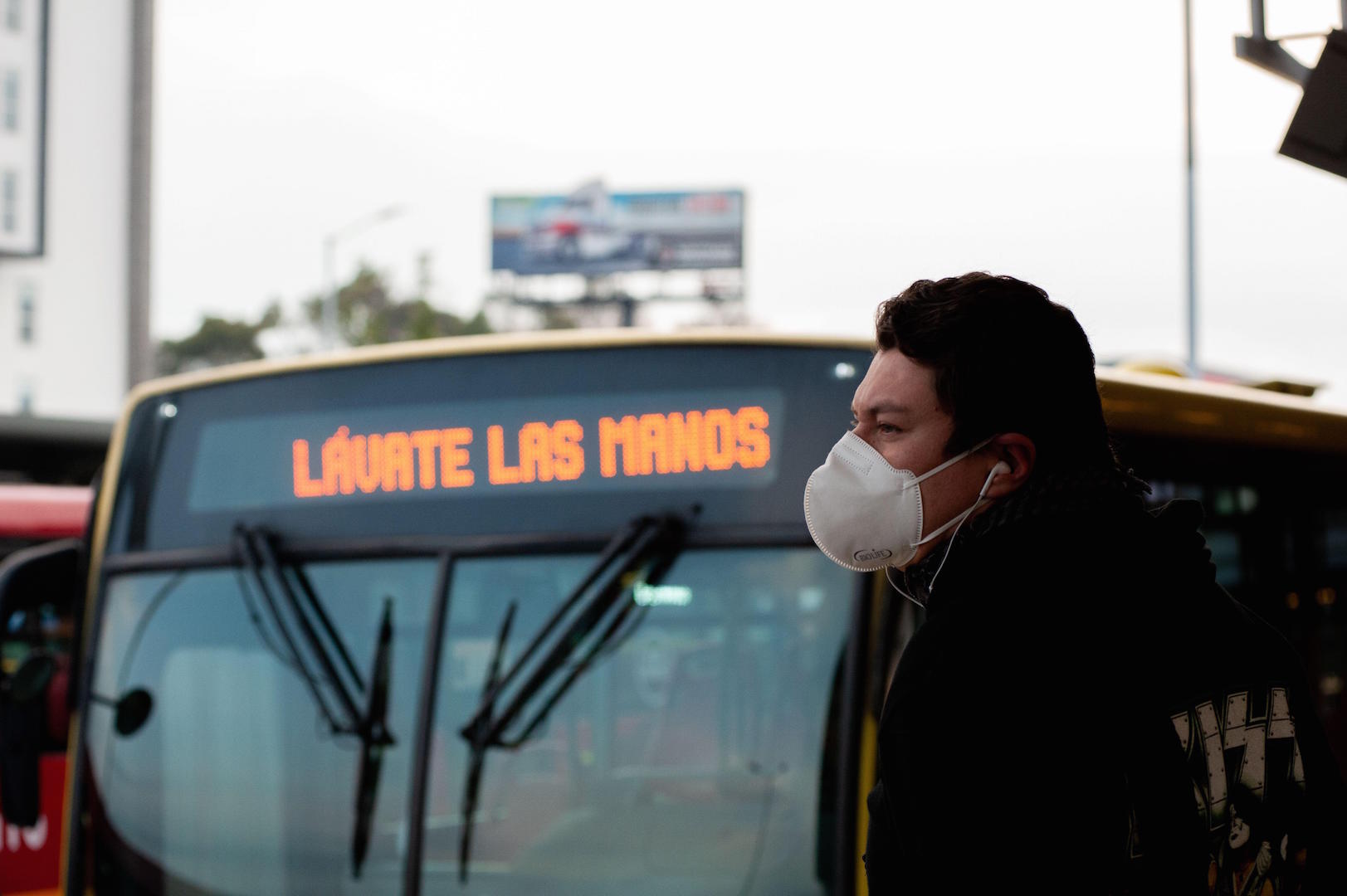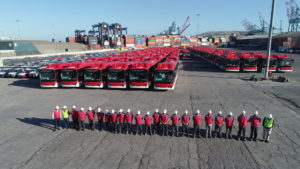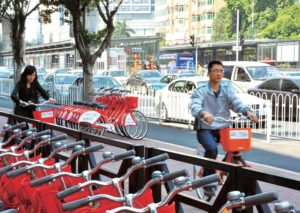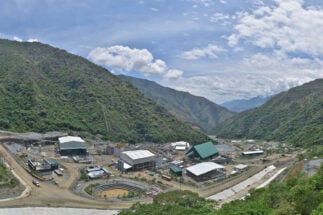For many cities in Latin America, transport is synonymous with traffic jams and smog. The sector is the largest and fastest growing source of carbon emissions in the region. Around 50,000 people die prematurely every year due to respiratory illnesses.
Nevertheless, the region has a window of opportunity for electrification and is already taking its first steps. Cities from Argentina to Colombia have started to swap diesel buses for electric vehicles, bought largely from Chinese manufacturers.
In an interview with Diálogo Chino, Lisa Viscidi, director of the Energy, Climate Change & Extractive Industries Program at the Inter-American Dialogue, said the region has made significant changes so far but more has to be done, warning that the coronavirus pandemic could stall progress. Viscidi co-authored in 2018 a report on the state of electric vehicles in Latin America.
Diálogo Chino [DC]: Why is the transformation of transport so necessary in Latin America?
Lisa Viscidi [LV]: The most urgent issue is air pollution. It’s something that affects everyone. It’s tangible. People can feel it. It causes thousands of deaths in the region every year and people feel that is the most urgent issue. In terms of climate change, it’s a major source of emissions in the region. Electric transportation is the most viable way to address that. It can have economic benefits, especially for vehicles that are in circulation most of the day, such as buses and taxis. And it can help countries to reduce expenses on fuel. The vehicle costs are more upfront but it can bring benefits later on, especially for countries that depend on oil.
DC: How relevant is the transportation sector in terms of emissions?
LV: Transportation is one of the biggest growing sources of emissions. In other regions, electricity is a much bigger source of emissions as countries depend on coal. But in Latin America electricity as a whole is very low carbon due to dependence on renewables, especially hydro. The region depends mainly on oil for transportation, with the exception of some biofuels in Brazil. Motorisation is growing at a fast rate. More people are buying vehicles faster.
DC: What differentiates Latin America from other regions in terms of the possibilities to improve its transportation sector?
LV: The transport sector in general has many things to tackle. It is a big source of emissions and pollution but also leads to congestion and traffic. We need to electrify vehicles, the high use ones especially, and make improvements for people to walk and bike. Bike-sharing can help, as well as restricted areas for cars not to enter. The system of vehicle circulation restriction based on the license plate hasn’t been successful. The transport issue is a severe problem that has to be deal with.
DC: What progress on electrification have you observed in the region?
LV: We’ve started to see major progress in a handful of countries. They were starting from a low point with only a few electric vehicles. Some have seen more in public and others in private transportation. We saw big growth in Santiago, Chile, in public electric buses, the biggest outside of China, but not that much on electric cars. Colombia has been growing every year in the rate of electric vehicle use, with Bogotá introducing electric buses to Transmilenio, for example. But given the size of cities in the region, the number of electric vehicles is still small.
DC: What about the finance options for electric buses?
LV: One of the important questions when it comes to the bus scheme is how they are financed. Something very interesting that happened is that some of the cities discovered an alternative way of financing buses. They get funds from the private sector and they don’t need to depend on loans from multilateral development banks or from their own domestic banks. This started in Santiago and something similar happened in Bogotá, where the conversion of Transmilenio will come from private equity funds. If the private sector is funding the bus schemes there’s clearly a good business model there and there’s returns.
DC: Despite some success stories in public transport electrification, most of the cities had to deal with many barriers. Are those barriers still there or has the region overcome them?
LV: The barriers are still there for the most part. The growth has been significant only in a couple of countries. Overall in the region, electric vehicles represent a small share of the total fleet. Price is still the biggest barrier. The coronavirus crisis will also make things difficult for electric vehicles. We’re not seeing tax breaks that attract consumers to this type of vehicle. Their uptake will slow down due to the crisis. Infrastructure is still another big barrier as there are not enough charging points. Santiago has quite a few but many cities don’t have enough. There has been improvement on a policy level. You can wait for the private sector or consumers to take action on their own, but governments need have a strategy as well.
DC: Will the current cheap oil act as a barrier for transport electrification?
LV: Each country has a different policy on fuel pricing. In some, fuel prices will go down a lot but in others that are less liberalised, there won’t be much fluctuation. The people buying electric vehicles are not motivated by whether or not it’s cheaper to use fuel. In terms of public transport, this is different. City authorities are going to have to look at the costs. But that will be over the life of the vehicle and not just now. Oil prices fluctuate a lot during the life of a bus, estimated to be 20 years. Cities shouldn’t base their analysis on today’s prices.
DC: A United Nations report found that if the current fleet of buses and taxies in 22 Latin American cities were replaced with electric vehicles the region could save up to US$64 billion in fuel by 2030, and avoid the emission of 300 million tonnes of CO2 equivalent. Has that projection changed in the new context?
LV: Any calculation relating to energy and transport has to be looked at again with everything that is going on. Oil prices are lower and the use of transportation has changed quite a lot. It’s not clear how will people move around as a result of coronavirus. People might initially be more afraid of using public transport so we might see a decline in its use. There will also be more people working from home and traveling less.









